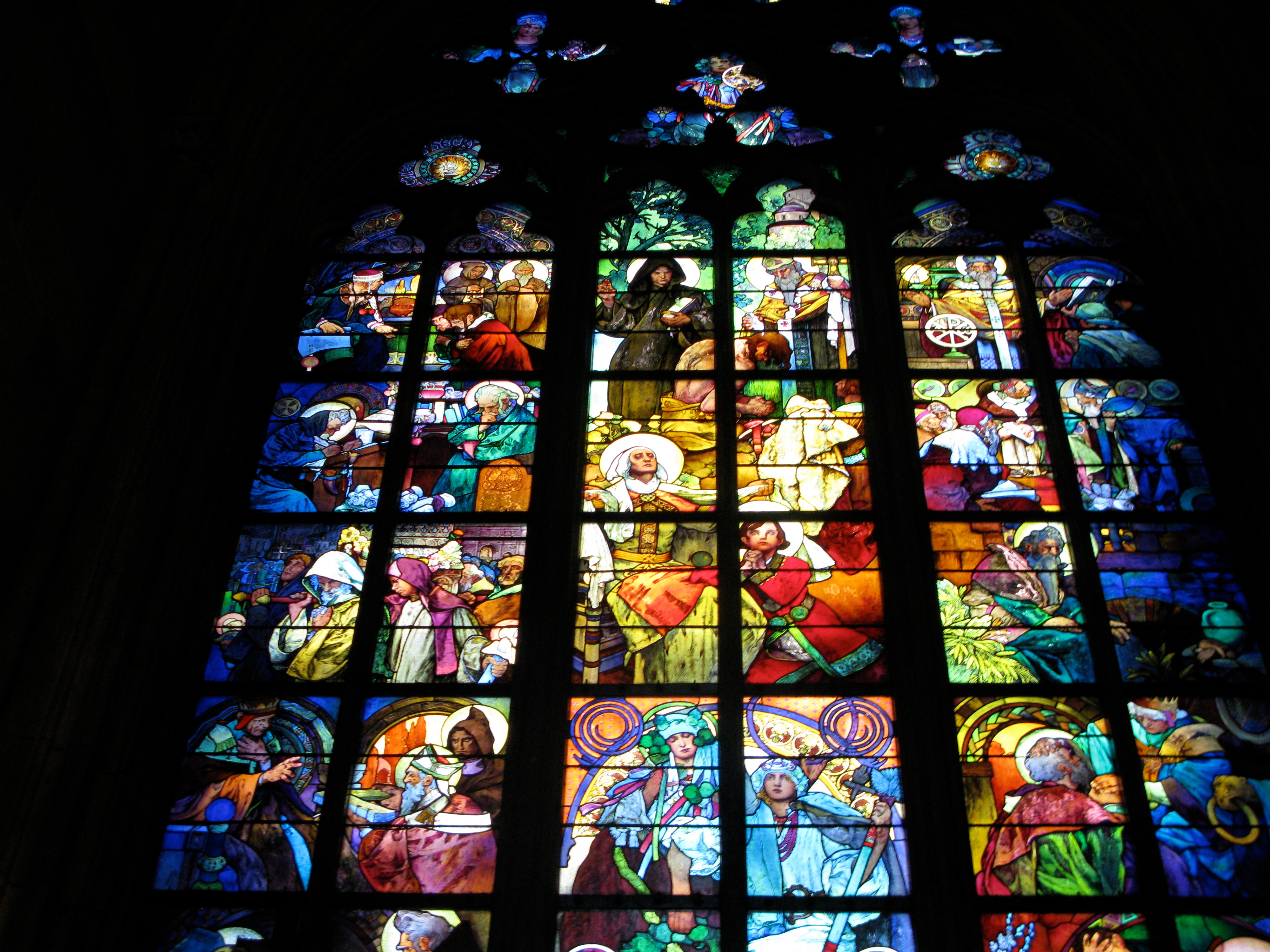



















 While in Prague my mother called me on my cell from Brussels. “You still didn’t go to the Mucha Museum?” – “No mum, not yet!” I replied in a defensive voice without really knowing what I had done wrong… “Mum… there is so much to do in this city!”
While in Prague my mother called me on my cell from Brussels. “You still didn’t go to the Mucha Museum?” – “No mum, not yet!” I replied in a defensive voice without really knowing what I had done wrong… “Mum… there is so much to do in this city!”
“Whatever you are doing today, stop!” she says. “This is really important, go to the museum and then call me when you are done!” I really don’t get it, what is there with this artist Mucha? I have seen his stuff in every commercial magazine ad, cafe and restaurant…what is the big deal?…
OK, she must know something, let’s go. I had in mind today to visit the Katedrala Sv Vita, San Vitus Cathedral located in the Prazsky Hrad, the Prague Palace. It doesn’t matter, I will go in the afternoon. The Mucha Museum, situated on Panska street, is in a small palace called Kauniki Palac. Built in 1998, this museum is dedicated to perhaps the most famous of all Czech visual artists, Alphons Mucha (1860-1939) — known for commercial work such as mass-produced decorative panels and posters for Sarah Bernhardt theatre performances.
Mucha exercised his greatest influence through his Encyclopaedia for Craftsmen (1902), a catalogue of Art Nouveau decorative elements, forms and designs whose precise drawings and sketches in small shelves are absolutely superb. The great thing about the museum is that — in addition to displaying drawings, lithographs, posters, pictures of his stage, costume, jewelry and furniture, carpet designs, decorations, charcoal sketches, personal memorabilia and Parisian notebooks — there is a one hour video about his life.
With the video you clearly understand his versatile creative talent, but mostly his life in the fashionable world of fin-de–siècle Paris when he suddenly realized that even with all the available comfort it was not enough. He felt the responsibility to make a difference for his country — at the time struggling. He was a communicator, and the tool was his art. On his return to Czechoslovakia, Mucha created the Slavonic Epic, a series of gigantic narrative oil paintings, which are now residing in Moravisky Krumlov castle, south-west of Brno.
In 1911 he completed the murals for the Prague Town Hall (Obecnà dům), the last major interior decoration in the Art Nouveau style in Prague. Soon after that the independent state of Czechoslovakia was created. Mucha designed postage stamps and bank notes. The complete cycle of the “Slav Epic” was officially presented to the Czech people and the City of Prague. In 1931 he was commissioned to design a stained glass window for the St. Vitus Cathedral, Prague.
I rush (in Prague you only walk) and enter the grandest Hradcanske namesti gates of the Palace, where every hour the guard is changed, on the way to the cathedral. It takes more than half an hour of a not very welcome and arresting negotiation of what sites I would like to see and therefore pay for, plus the photographic permit, a map of the castle in Czech, the cold and a long line passing through a first, a second and a third opulent courtyard, the oldest dominated by looming towers, pinnacles, spires and buttresses. I finally arrive at the entrance door of the San Vitus cathedral which personally reminds me of larger Notre- Dame in Paris.
Built over 1000 years and completed in 1929, no doubt this awe-inspiring building is the spiritual center of Bohemia. The cathedral’s Gothic structure owes its creation to Charles IV ‘s lifelong love affair with Prague. The 19th Century nationalists completed the work according to the original plan in a Neo- Gothic manner. My camera lens scans every corner of the enormous interior nave and the shutter speed quickly calculates the enormous amount of varying-hued light from the gallery of the 21 stained-glass windows created at the beginning of the 20th Century. And here it is, the third window on the left in the Archibishop’s Chapel…the most famous of all, it is created by Alfons Mucha. It’s vibrantly impressive, timeless.
In Prague — as in Paris — women, artists and men struggled to be immortalized by Mucha in the forms of goddesses, seasons, flowers, muses, saints and universal heroes; all these throughout his immense art, devotion and sensibility.
Staring while a little dizzy at the intensity of colors of the magnificent glass, I ask myself what is more is to be worshiped than the divine within his gifted talent? Without really waiting for an answer, I remember having to call my mother…she surely has that one for me.
Joelle’s picks
The Museum:
Mucha Museum
Kaunický palác
Panská 7
110 00 Prague 1
The Mucha Museum Opening Hours:
daily 10:00 am – 6:00 pm
Tel./Fax: +420 224 216 415 – shop
The Cathedral:
Prague Castle Hadranske namesti
tel 224 371111/ open 9 to 5 daily/ admission50-350 Kc
